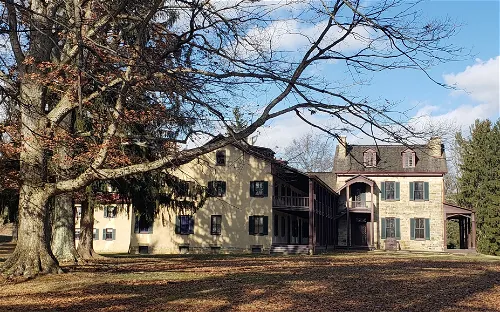Gallatin House - Friendship Hill National Historic Site and its collection
Friendship Hill, located near Point Marion, Pennsylvania, was the residence of Albert Gallatin, a prominent early American politician and statesman. Gallatin's distinguished career included serving as a U.S. Congressman, the longest-serving Secretary of the Treasury under two presidents, and ambassador to France and Great Britain. This historical connection adds a significant layer of interest to the site for visitors interested in American history.
Location and Accessibility of Friendship Hill
Situated about 50 miles south of Pittsburgh, Friendship Hill overlooks the scenic Monongahela River. The house is maintained by the National Park Service as a National Historic Site and is open to the public. Visitors can enjoy the picturesque views of the river and the surrounding landscape while exploring the historical site.
Architectural Features of Friendship Hill
The house at Friendship Hill is composed of seven sections, each with its own unique architectural style and historical significance. The original brick house, built in 1789, was constructed in the Federal style with a Flemish bond. In 1798, a simple frame dwelling was added to the north side of the brick house. The Stone House, added by Gallatin in 1823, is a 3.5-story structure and the largest section of the house. These diverse architectural styles provide a fascinating glimpse into the past for visitors.
History & Anthropology Nature & Natural History Historic house Person & Artist

